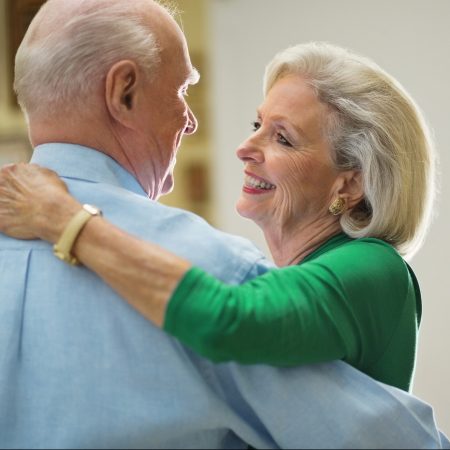Use it, or Lose It: Dancing Shows to Benefit Memory Loss Population
There is the popular phrase, If you don’t use it, you lose it”. This saying has stuck around because it has been an important take-away from multiple studies, including the New England Journal of Medicine report on the effects of recreational activities on mental acuity in aging. As a dance instructor at Lake Shore Dance Academy and reading over this report, I couldn’t help but to get excited by reading all of the great benefits that dancers can experience. Dancing shows to benefit memory loss population.
Before I share the clear benefits from dancing, it’s helpful to have some background knowledge about this report. This 21-yearlong study involved participants that were 75 years and older and experiencing a type of memory loss (i.e. dementia, Alzheimer’s disease). The researchers focused on select physical and mental activities. Interestingly enough, out of the various physical activities, except for dancing, showed promising results relating to memory loss. In other words, from the different studied activities dancing showed the greatest physical and mental benefits!
Now, onto highlights of the study…
Main Take Aways
Neuroplasticity
Neuroplasticity can be understood as the brain’s ability to make meaningful and multiple connections with the activity/information and remember it. In other words, when a person learns something, or exercise their brain, they are either making a new connection or strengthening an already-existing connection. Just like other muscles in the body, if we do not take time to strengthen it (our brain), then the muscle is likely to become weak.
Aging and memory
Our brains are essentially filled with “wires” called neural pathways; and the (electrical) current is called a synapse. The more often we use these neural pathways, the more permanent they become. While it is important to maintain these connections, it is equally, if not more important to create new neural pathways. Don’t get me wrong, when people age, it is natural for the neural pathways to weaken and ultimately die off; however, people with memory issues, this degradation occurs quicker. To help support people with memory loss, research encourages people to purposefully find and practice new approaches in their lives. By making these new connections, there is not such a great reliance on the single neural pathway.
This particular finding, is one of the many things that got my excited because …So embrace learning new things, like ballroom dancing!
Intelligence
While some people may have their understanding of intelligence, the research article defines intelligence as something that is not considered as automatic. In other words, when something is not natural for a living being, or they need to actively consider choices, it is considered as intelligence. Therefore, when people learn something new, like dancing, it helps maintain their intelligence. It creates those important neural pathways!
Full Engagement
Full engagement can be understood as when dancers participate mentally, physically, as well as emotionally. The study also uses the phrasing “entering a state of flow” when explaining full engagement. When reading this section of the study it actually reminded of the saying “in the zone”. From my experience, being “in the zone” is a time where I am completely absorbed by an activity I thoroughly enjoy, and before I know it so much time has passed by. Perhaps, you have felt this way at some point in your life?
Questions
Why dancing? Dancing is an activity that requires an individual to rely on multiple brain functions simultaneously. As I’ve mentioned, it is important to make multiple kinds of connections, and dancing accomplishes that.

Beautiful senior couple ballroom dancing.
What kind of dancing?
You might be wondering what is the best dance to learn? The research does not promote one type of dancing over another. Rather, the study shows that the most benefit comes from making those spontaneous decisions while performing any kind of dance. The most important thing is continue to build different neural pathways, and try to avoid the same pathways (i.e. old routines) over and over again while dancing.
Who benefits more, women or men?
Before sharing who reaps the most benefits from dancing, I need to explain the two roles in dancing: the Leader and the Follower. Most times, men do the leading while women follow. According to the research, the individuals who is the Follower shows to experience the most benefits; therefore, women are the ones who benefit most. This is because they are frequently making split-second decisions while following and interpreting what their dance partner will do next. As a result, they experience the most benefits from dancing. However, men can still reap the mental benefits from dancing. In order for the Leader to benefit, researchers encourage the leader to dance in various patterns, which will strengthen a multitude of different neural pathways. Another suggestion for leader is to become aware of what their partner is comfortable with and what they enjoy while dancing.
Using this information today
Don’t get me wrong, this study is extremely fascinating –especially if you’re a dancer! But what if you’re not a dance enthusiast and/or a senior citizen — how can you use these findings in your everyday life? Remember how the researchers stated the importance of creating new neural pathways when doing activities, especially as we get older? Consider how you can change your memorized (and probably mundane) tasks. Try to add or change something — maybe reorganize or rearrange an area or room? Another idea would be to challenge yourself to trying new activities! Learning something new (like Ballroom Dancing at Lake Shore Dance Academy) can create new neural pathways! Whatever new activity you find yourself learning, I not only encourage you to keep it up, I also applaud you! Trying new things is not always easy. Remember, if you don’t use it, you lose it!
Credit: https://socialdance.stanford.edu/syllabi/smarter.htm
I proudly serve the Evanston, Wilmette, and Winnetka communities and if you are considering to try out ballroom dancing, I would be delighted if you would visit my website.
Any questions and/or comments? I would love to hear from you! Click here to reach out.

